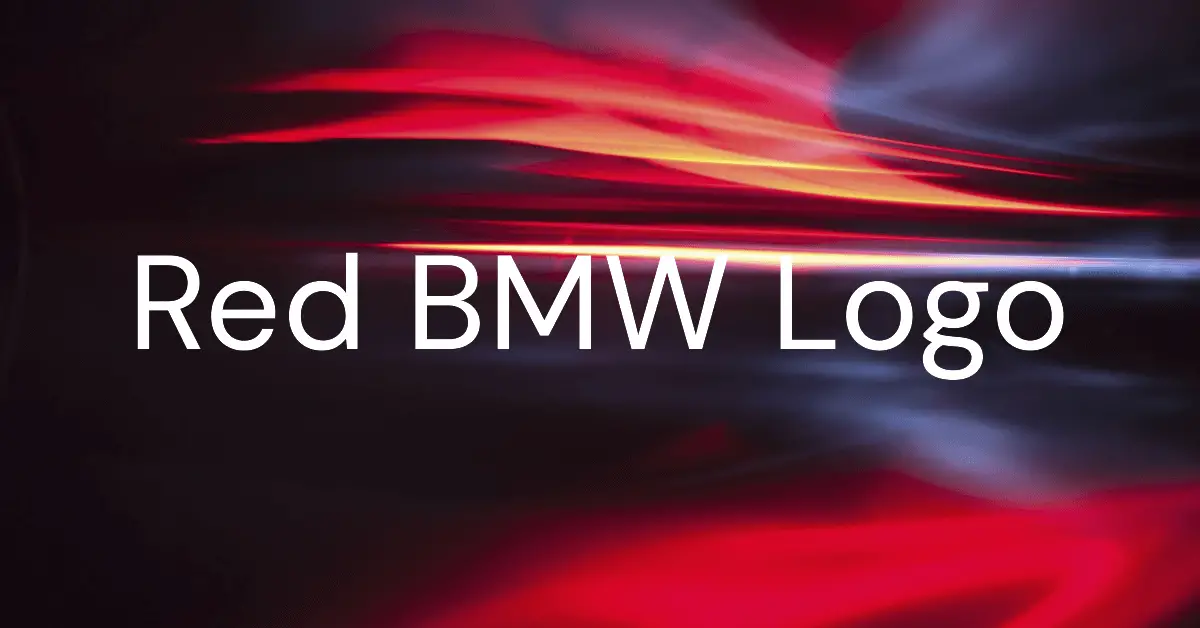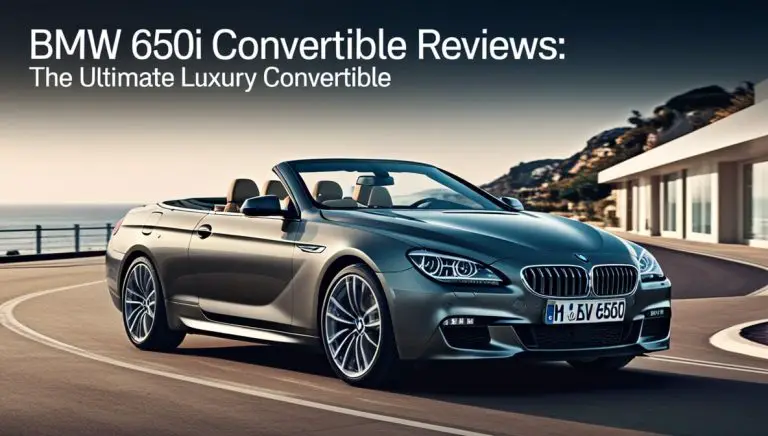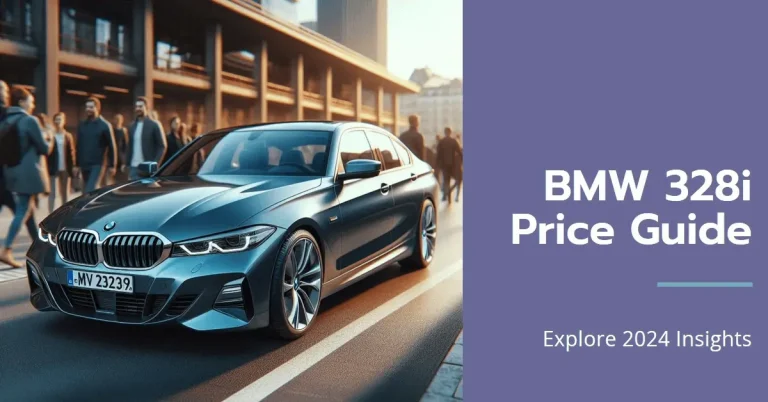The Meaning Behind BMW’s Iconic Red, Blue and White Logo
BMW’s distinctive blue and white roundel logo is one of the most recognized logos in the world, but have you ever wondered what the colors and design represent? BMW’s circular emblem has a fascinating origin story spanning over a century.
In this in-depth post, we’ll uncover the history and symbolism behind BMW’s iconic red, blue and white logo. What do the colors signify? What design elements made the cut over the years? Let’s find out!
When Was the BMW Logo First Used?
The origins of the BMW logo date back to 1913 when the company was still primarily an aircraft engine manufacturer. The circular design was patented in 1917 and a version of it is still used today on all BMW-produced vehicles.
Prior to becoming Bayerische Motoren Werke (BMW) in 1916, the company was first established as Rapp Motor in 1913 by Karl Rapp. The original registered trademark in 1917 featured the letters “Rapp Motorenwerke” encircling the company’s location, “Munich.”
In 1918, the company’s name changed to Bayerische Flugzeug-Werke (BFW), as they shifted to aircraft production. The word “Munich” remained in the emblem, while “Rapp” was replaced by the iconic roundel design.
When BFW morphed into BMW in 1916, the letters “BMW” entered the logo for the first time. However, the letters were initially enclosed in an oval race track shape rather than the now-familiar roundel.
It wasn’t until 1923 that the BMW logo began to resemble the version we recognize today. The blue and white quadrant pattern was introduced against a black backdrop. The BMW name also moved inside the circular roundel shape.
Over 100 years after its inception, BMW has made only subtle tweaks to their trademark logo, which remains one of the most distinctive emblems in the automotive industry.
What Do the Colors and Design Represent?
The BMW logo’s unique color scheme and design all have symbolic meaning tied to the company’s German heritage:
- Outer Blue and White Bands – The blue and white checkerboard design represents the Bavarian Free State colors, honoring BMW’s home state of Bavaria. The regional flag is similarly designed with blue and white diamonds.
- Inner White Quadrant – This section depicts a rotating aircraft propeller against the clear blue Bavarian sky. It’s a nod to BMW’s early history as an aircraft engine manufacturer.
- Red Field – The red quadrant was originally not part of the logo. It was introduced in 1928 at the request of BMW’s importer to Japan to honor the Japanese flag. Red was already considered a lucky color in Asian markets.
- Black Backdrop – The first version had a black backdrop, likely chosen for printing clarity. Black was eventually discarded in favor of transparent.
- Blue Ring – A blue outer ring was briefly added in the 1950s before being removed again. The ring highlighted BMW’s partnerships and presence worldwide.
While other colors and elements came and went, the basic quadrant design has remained part of BMW’s visual identity since the beginning. The Bavarian flag inspiration and propeller symbolism maintain the brand’s ties to its German roots.
How Has the Logo Evolved Over Time?
As one of the oldest automotive brands, BMW has kept their logo design largely consistent over the decades. Only minor changes have been introduced periodically:
- 1966 – The letters “BMW” were thickened and the surrounding circle became thinner. Spacing between quadrants was also minimized.
- 1997 – BMW updated the logo again with crisper lines and refined angles on the quadrants and font. The letters also appear more prominent.
- 2020 – For digital application, BMW introduced a slightly darker shade of blue that displays clearer on screens with improved contrast.
- Rare Offshoots – Alternative versions of the logo have appeared over the years for BMW subsidiaries like BMW M Sport and BMW Individual. Event-specific logos are also occasionally rolled out, like for BMW’s Olympics fleet.
Overall though, only subtle tweaks have been made to modernize and refine the logo’s proportions and angles. No dramatic overhauls were introduced to maintain brand consistency spanning over a century. The BMW emblem continues to be easily recognizable worldwide.
Why is the BMW Logo So Recognizable?
There are several reasons why BMW’s design is so distinguishable, even compared to other luxury vehicle brands:
- Distinct Color Scheme – The blue and white Bavarian colors paired with the red Japanese flag reference make for an eye-catching combination. The contrast pops visually.
- Clean Roundel Shape – Circular logos stand out within the automotive industry, where most brands opt for more traditional badges or crests. The roundel is unique, especially with its quadrants.
- Elegant Simplicity – The minimalist geometric shapes are easily scalable and versatile for different applications without losing impact. There’s no complicated typography or intricate graphic elements.
- Aviation Ties – The origin as an aircraft company is evident in the abstract propeller symbolism, resonating with those who recognize it.
- Longevity and Consistency – Unlike other brands that undergo logo redesigns, BMW has used iterations of the same visual ID for over 100 years, building strong recognition over time. Customers know to look for the roundel.
With so few changes over the decades, BMW has one of the most timeless and memorable brand logos across any industry. The years of brand consistency likely generate a strong sense of familiarity and nostalgia as well. For BMW enthusiasts who own multiple vehicles over their lifetime, the emblem is a beloved icon.
When Was the BMW Logo First Used?
As discussed in the introduction, the BMW logo was first conceived in the early 1910s when the company was still focused on aircraft engines. But to gain more perspective, let’s take a chronological look at the key events in the emblem’s history:
1913
- The circular logo usage begins when pioneering aircraft engine manufacturer Rapp Motorwerke is formed. Their name encircles the word “Munich” in a round emblem.
1917
- Rapp registers their logo design as an official trademark, protecting the visual identity.
1918
- Rapp Motorenwerke is converted into Bayerische Flugzeug-Werke (BFW), shifting to aircraft manufacturing. The logo is updated with the name change in a similar round layout.
1920
- BFW merges with Automobilwerk Eisenach, adopting the united BMW name moving forward.
1923
- The modern roundel appearance begins to take shape, now with the BMW name contained in a black circular badge with blue and white quadrants.
This early evolution from Rapp to BFW to finally BMW in the span of a decade marked the initial formation of the internationally recognized logo we all know today. Even back in the 1920s, the design basics of the radiator-shaped roundel were firmly in place and already tied to BMW’s Bavarian heritage.
What Do the Colors and Design Represent?
As discussed earlier, each element of the bisected circular BMW logo carries symbolic meaning. To recap:
Outer Blue and White Bands
The blue and white quadrants reflect the design of the Free State of Bavaria flag, with alternating colored diamonds. BMW proudly incorporated their home state’s colors into the logo from the beginning, establishing its German roots.
Inner White Quadrant
The white quadrant is meant to depict a rotating aircraft propeller set against a clear blue Bavarian sky backdrop. This ties back to BMW’s origin as an aircraft engine manufacturer, before venturing into automobiles and motorcycles.
Red Field
Red was not originally part of the logo until 1928, when a Japanese BMW importer suggested it. The red represents the Japanese flag and also symbolizes luck in Asian markets. BMW appeased their new exporter by making the addition.
Black Backdrop
Initially, BMW placed the logo against a black background, likely to ensure the contrasting colors popped. Black provided an elegant framing as well. They eventually switched to transparent for simplicity.
Blue Outer Ring
For a period in the 1950s, a thin blue ring circled the entire roundel, highlighting BMW’s expanding international reach. This was the only major stylistic deviation from the traditional logo, which proved short-lived.
Through all the variations, BMW has always maintained the Bavarian identity and unique roundel shape. The emblem progressed over time, but those core foundations remained intact for 100+ years and counting.
How Has the Logo Evolved Over Time?
Although the underlying design remains, BMW has periodically tweaked and polished their famous roundel logo over the decades. Let’s look at some of the most significant updates:
1966 Redesign
In the mid-1960s, BMW’s logo underwent its first notable aesthetic refresh since the 1920s:
- Thickened the BMW lettering inside the roundel for a bolder, more modern look
- Slimmed down the surrounding circle to offset the thicker text
- Subtly adjusted the spacing between the quadrants
- Sharpened the angles on the quadrants for precision
This first redesign was quite restrained, keeping the overall roundel layout visitors had come to know intact. BMW was careful not to alter brand familiarity.
1997 Digital-Friendly Revamp
With digital design on the rise, BMW took the opportunity to optimize their logo for the Internet age in the late 90s:
- Made lines and shapes associated with the quadrants and lettering crisp and clean
- Refined the angles and edges for digital scalability
- Enlarged the space for “BMW” text to increase prominence
- Vertically and horizontally aligned font and quadrants
The resulting logo popped more clearly on websites and apps with bolder definition. This set the stage for today’s digital BMW branding.
2020 Darker Blue Shade
For displays and interfaces, BMW switched their decades-old blue hue in 2020 for a richer, deeper shade dubbed “BMW Blue.”
- The darker blue increased contrast, especially on bright screens
- Enhanced clarity for digital environments
- Maintained brand consistency across physical and digital touchpoints
This simple color tweak optimized logo legibility without sacrificing heritage.
Special Variations
For specific business units or initiatives, BMW has showcased modified takes on their iconic roundel:
- BMW M – A trio of colored stripes added for the high-performance M sub-brand
- BMW Individual – Linear gradations of color to denote customization
- Olympics – Alternative color schemes and national flag elements for sponsored Olympic fleets
These creative spins on the logo are deployed sparingly when the situation calls for it. BMW always returns to the quintessential design that customers recognize and trust.
Why is the BMW Logo So Recognizable?
BMW’s timeless logo is instantly identifiable even at a glance. What gives this emblem its powerful visual impact?
Distinct Color Scheme
The blue and white Bavarian colors paired with the red Japanese flag quadrant create a vibrant combination you won’t find in competitor logos. The radiating configuration grabs attention on the road.
Minimalist Geometry
The roundel’s simple shapes, clean lines, and precise angles lend an air of modern sophistication to the design across applications. There’s no intricate detail to complicate scaling.
Unique Roundel
Circular brand emblems stand out in the automotive category dominated by badges and crests. The iconic roundel is ownable and prominent on vehicles.
Historical Aviation Ties
For those familiar with BMW’s past, the abstract propeller symbolism within the modern logo ties back to their aeronautic roots.
Brand Longevity
BMW has stuck with essentially the same visual identifier for over 100 years since their founding, building strong brand familiarity over decades.
This fusion of historical ties, smart design, and brand consistency cements BMW’s roundel as one of the world’s most recognizable logos across all industries. It connects with fans on an emotional level by evoking heritage and performance.
When Was the BMW Logo First Used?
To recap the BMW logo’s origins:
- The circular emblem was first conceived around 1913 when the company was still called Rapp Motorenwerke.
- Their name circled “Munich” in an early version of the roundel shape.
- In 1917, Rapp trademarked the logo, protecting their new visual asset.
- When Rapp became Bayerische Flugzeug-Werke (BFW) in 1918, the logo evolved to feature the new name.
- The modern “BMW” lettering entered the design in the early 1920s as Bayerische Motoren Werke was formed through a merger.
- By the late 1920s, the logo design started resembling what we know today – a black-backed roundel with blue, white, and red quadrants containing the BMW name.
This important emblem was tied to BMW right from their inception in the pioneering days of early aircraft and engine development. It symbolically reflected their Bavarian roots and vision of innovation.
Over a century later, the core foundational logo endures as one of BMW’s most valuable brand assets, permeating a globally renowned luxury automotive empire today.
Conclusion
BMW’s iconic tri-color roundel has certainly stood the test of time. The logo’s symbolic ties to Bavarian culture and history give it deeper meaning, while the quadrant design reflects the company’s aeronautic origins.
Remarkably, over 100+ years, BMW has kept their trademark emblem intact with only minor tweaks to modernize and refine it through the decades. No dramatic overhauls ever compromised brand familiarity.
The result is one of the most recognizable logos worldwide, turning heads on roads and racetracks every day. For BMW enthusiasts, the roundel represents a trusted badge of quality.
BMW will likely continue proudly displaying their trademark emblem for the next 100 years and beyond. The quintessential logo encapsulates everything the brand has achieved and where they came from. It’s a globally cherished icon representing innovation, performance, and Bavarian heritage.







